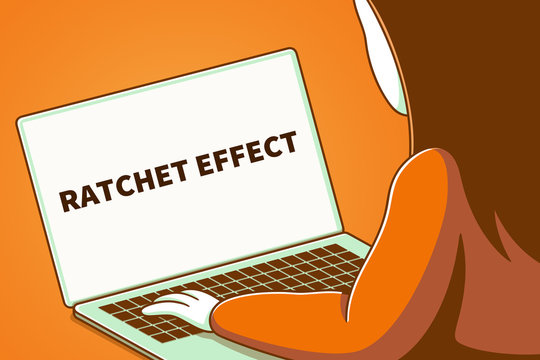
What is the Ratchet Effect?
Imagine a mechanical ratchet (like a wrench) that only turns forward, never backward. Once spending or debt increases, society struggles to roll it back. Think of it like:
- 🔄 Upgrades are permanent: New TVs, bigger houses, luxury vacations—once you’re used to them, cutting back feels painful.
- 🧀 Institutional bloat: Organizations add staff, programs, and costs over time. Chopping them later? Nearly impossible.
Example: A couple earning $300K/year still drowns in debt because their spending “ratcheted up” with their income.
The Ratchet Effect in Action
1. Households: Lifestyle Creep
- Start small: Young couples live frugally.
- Earn more, spend more: Higher income ➔ bigger house, pricier cars, lavish vacations.
- Trap: Debt piles up, and cutting expenses feels like “losing status.”
⚠️ Result: Even high earners live paycheck-to-paycheck.
2. Institutions: Bureaucracy Bloat
A major university in 1993 had 3 staff per 100 students. By 2007, that ballooned to 14 staff per 100 students.
- Why? More administrators = more self-interest in protecting jobs.
- “Cutting fat” fails: Instead of trimming waste, vital programs (the “muscle”) get axed to protect bureaucratic bloat.
The Rising Wedge of Collapse
As spending, debt, and bureaucracy grow, systems become brittle—like stacking blocks too high. When cuts finally happen, everything collapses.
- Phase 1: Competent people quit (they see the crisis coming).
- Phase 2: Optimists burn out trying to fix it.
- Phase 3: Only the incompetent remain—promising quick fixes with PR tricks, not real solutions.
Example: Student debt jumped from $0 in 1993 to $1.8 trillion today. We now see this as “normal,” not reckless.
Why Can’t We Fix It?
- Debt as a Band-Aid: After the 2008 financial crisis, near-zero interest rates made borrowing feel “okay.”
- Trapped by Debt: Student loans can’t even be erased in bankruptcy, trapping borrowers (and enriching lenders).
- Denial: People and institutions cling to old habits. Admitting mistakes feels like failure.
The Way Out
The solution isn’t just budgets or spreadsheets. It’s a cultural reset:
- Shift from “spend more = success” to valuing sustainability.
- Stop normalizing extreme debt for homes, schools, or governments.
- Focus on resilience, not luxury.
Bottom Line: Without changing our values, the Ratchet Effect will keep tightening its grip—until the whole system snaps.
Visual analogy:
🏗️ Picture a tower of Jenga blocks. Each block = more spending, debt, or bureaucracy. Remove one block (cut costs), and the whole tower wobbles. Remove too many, and it crashes.